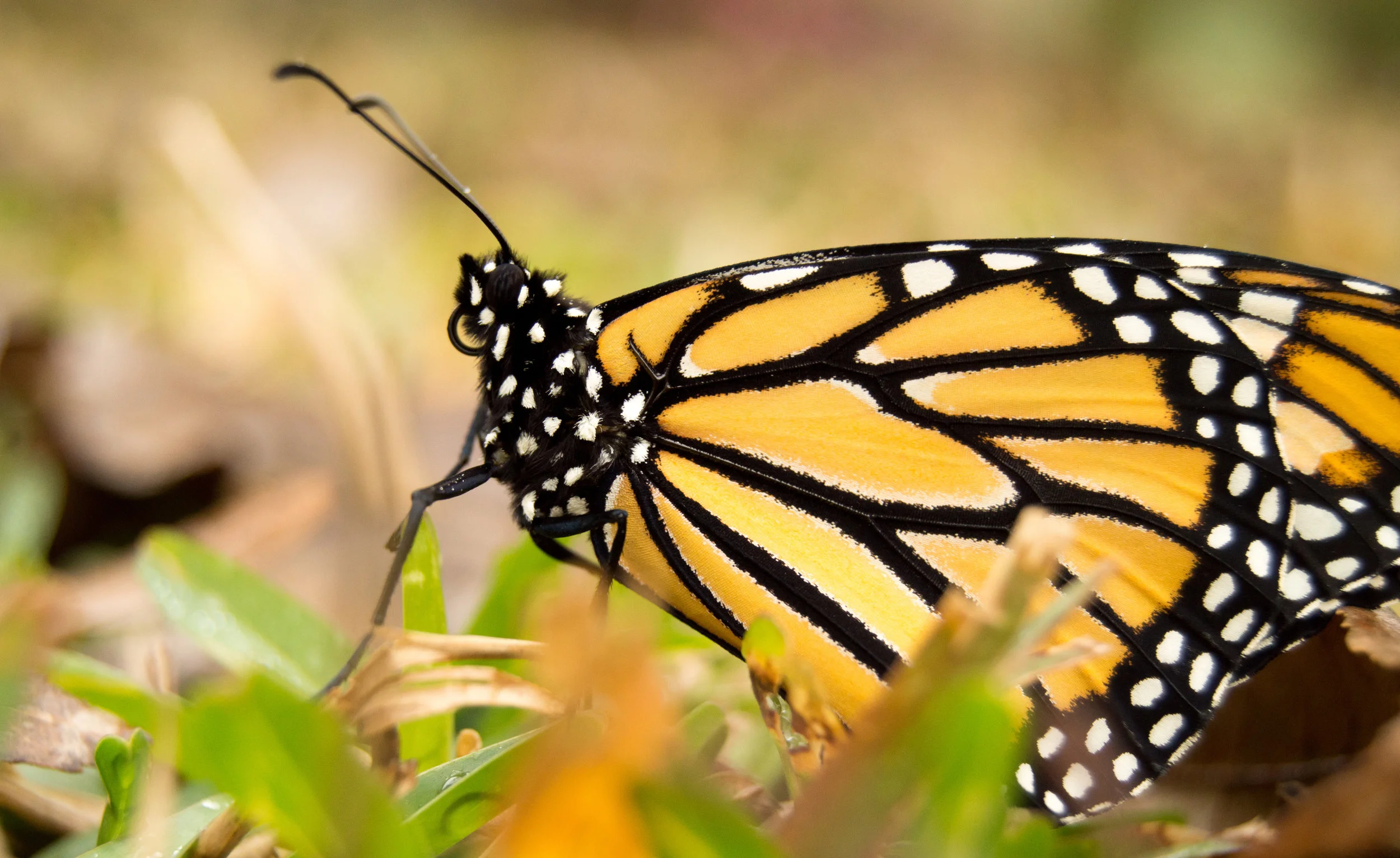Praise Be to Painted Ladies by Alessandra Simmons
/Everyday Nature
Before I ever knew their name, I had seen them flying around the farm and thought to myself, “Not a monarch.” Less showy than monarchs, painted lady butterflies have smaller wings and their orange and black pattern isn’t quite as bright. Painted ladies, however, are more common than monarchs. Unlike monarchs, which can only lay eggs on milkweed, painted ladies have been discovered on over 100 different host plants. The pearly everlasting is one of them and it precisely why I came to finally notice this frequent visitor. At Hoot Blossom, we are propagating wildflowers and wildgrasses that would grow in this region had humans not had such a predilection for building roads, buildings, and lawns. As I was potting up the pearly everlastings for sale, I noticed cobweb-like things and little black caterpillars on the silvery fuzzy leaves. “What pest is this?” I wondered. It wasn’t pretty, and I didn’t think anyone would want to purchase the plants so I stopped potting them up.
After a bit of research, I learned it was the painted ladies laying eggs on the pearly everlasting plants, building silk nests and eating the leaves. Carrying on as painted ladies will do. I learned painted ladies are found across north america and around the world, are not picky eaters and are not in need of conservation, and I felt disappointed.
We are also propagating and selling butterfly weed, a type of milkweed adored by monarch caterpillars. When we find a monarch caterpillar on the underside of the narrow leaves, chomping away, we rejoice and show it off to visitors who also ooh and ahh.
I wonder about my different reactions to the types of butterflies living on our plants. With monarch populations at risk due to loss of habitat, it has become quite popular to breed them. This is one reason we are so excited to find their caterpillars. Especially since scientists are now saying the best thing you can do to support healthy butterfly populations is plant milkweeds and butterfly habitat and let them breed in the wild, rather than breed them indoors.
Currently we are in the midst of the sixth great extinction: 1 million species are on the brink of dying off according to the recent report “2019 Global Assessment Report on Biodiversity and Ecosystem Services” released by the U.N. which states that this extinction is in part caused by the fact that humans have radically altered 75% of the usable land primarily with agriculture and concrete.
Monarchs are one of the species at risk, painted ladies less so. So while I think excitement is a reasonable reaction to finding a caterpillar on a milkweed; I think finding a painted lady caterpillar ought to inspire the same joy. In the poem “Pied Beauty,” Gerald Manley Hopkins extols ordinary speckled parts of the landscape:
Glory be to God for dappled things –
For skies of couple-colour as a brinded cow;
For rose-moles all in stipple upon trout that swim;
Fresh-firecoal chestnut-falls; finches’ wings;
Landscape plotted and pieced – fold, fallow, and plough;
While we are doing the urgent work to restore habitat for monarchs (and the other 999,999 other species at risk of extinction), it seems to me that we need another version of Hopkins poem to help us appreciate the common place plants and animals that are doing the hard work of living with us as neighbors.
Glory be to things that survive. Quack grass that persists, hackberry trees that thrive through drought and flood. For so-called “street trees,” bur oak and hedge maple preservering on polluted curbsides. For Austrialian Cuttlefish. Squirrels feasting on the nuts of city parks. Falcons nesting on skyscrapers. Coyotes and crows adapting to an urbane lifestyle... and yes glory be to painted ladies growing as happily on my pearly everlasting as it does on parking lot thistles.

